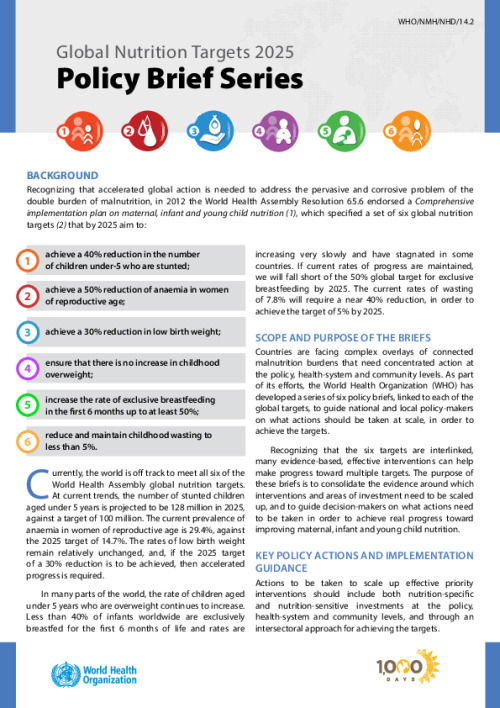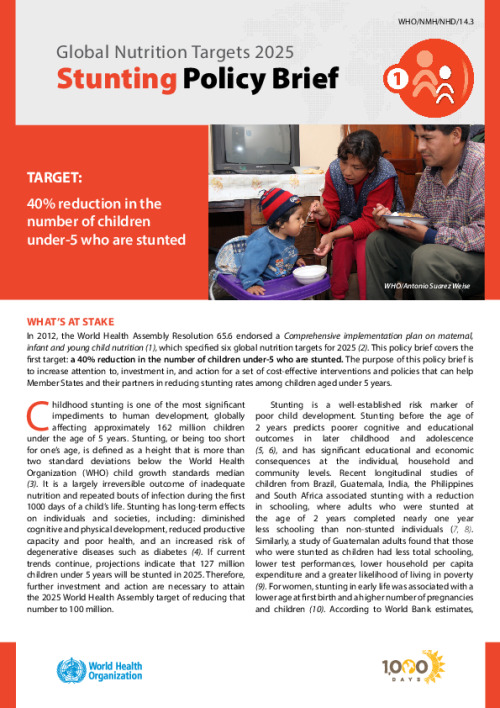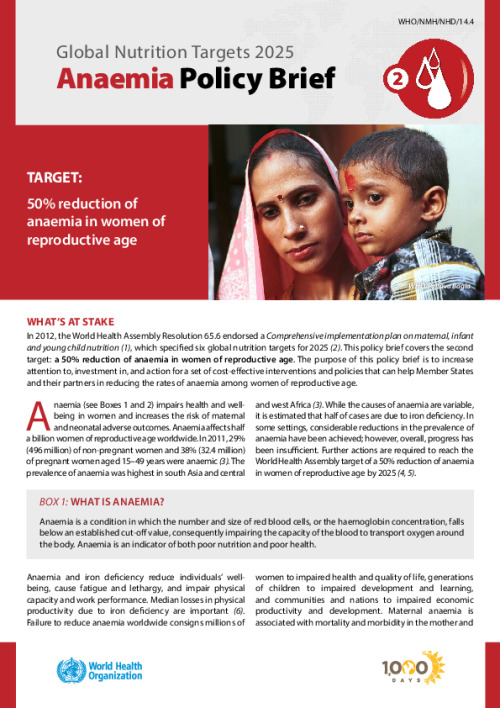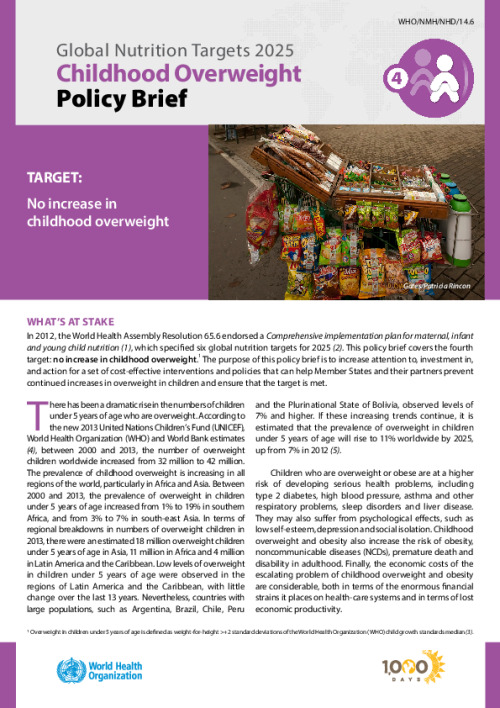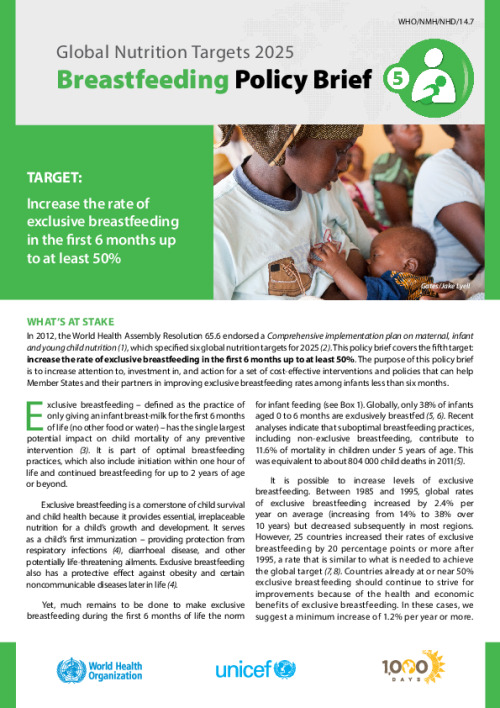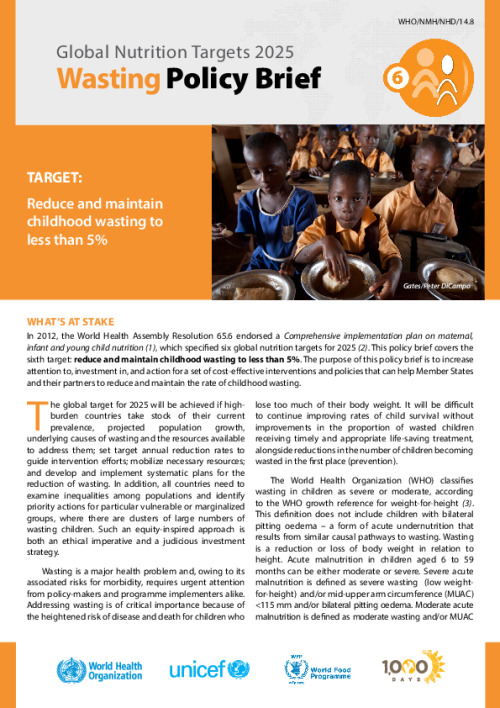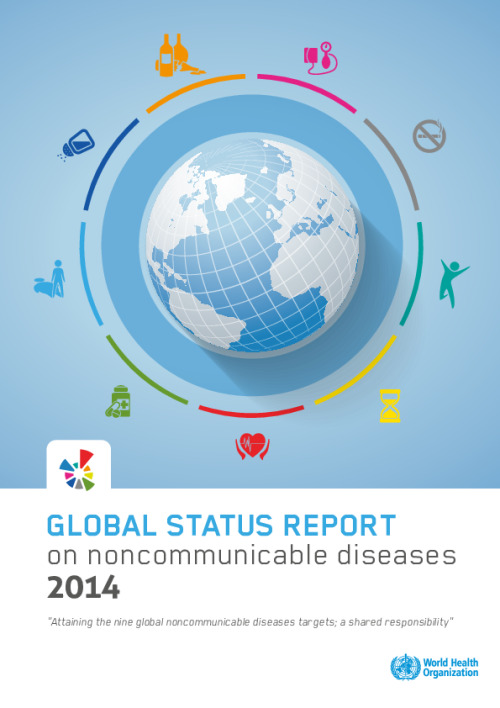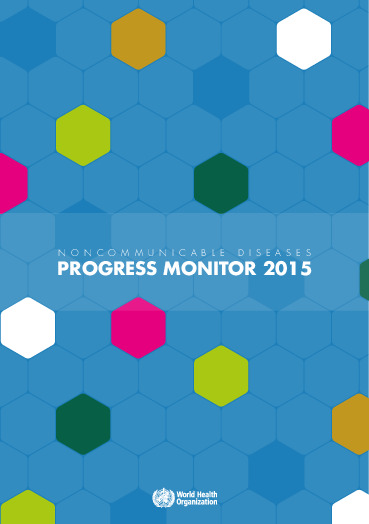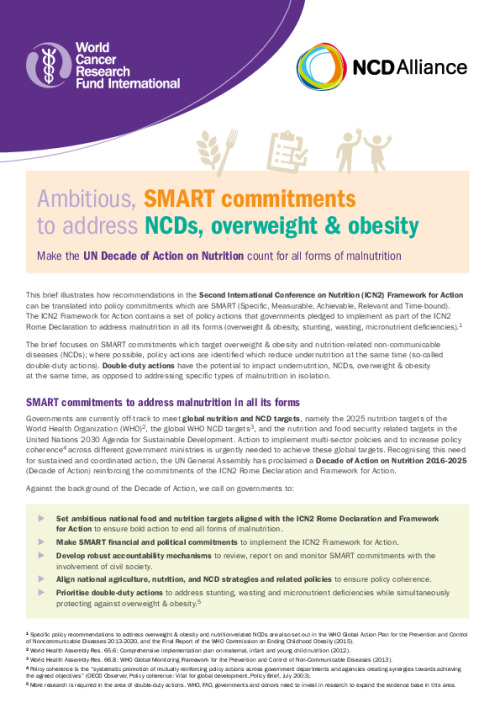Global Targets 2025 to improve maternal, infant and young child nutrition
In 2012, the World Health Assembly Resolution 65.6 endorsed a Comprehensive Implementation Plan on Maternal, Infant and Young Child Nutrition, which specified six global nutrition targets for 2025.
In 2014, Member States of the World Health Assembly approved a Global Monitoring Framework on MIYCN to track progress against these targets which led to the approval of the core set of indicators by the World Health Assembly in 2015.
The World Health Assembly Tracking Tool at http://www.who.int/nutrition/trackingtool/en/ can help countries calculate national targets based on recent baseline findings, historical trends and population growth rates. However, the level of ambition in setting the targets will depend on the country-based analysis of the current circumstances and a review of the policies and actions that are planned and implemented.
Policy Brief Series
The World Health Organization (WHO) has developed a series of six policy briefs, linked to each of the global targets, to guide national and local policy-makers on what actions should be taken at scale, in order to achieve the targets. The briefs consolidate the evidence around which interventions and areas of investment need to be scaled up, and to guide decision-makers on what actions need to be taken in order to achieve real progress toward improving maternal, infant and young child nutrition.
Voluntary global targets 2025 for noncommunicable diseases
In September 2011, the Political Declaration of the High-level Meeting of the General Assembly on the Prevention and Control of Non-communicable Diseases (document A/66/L.1) was adopted at the High-level Meeting of the United Nations General Assembly on the Prevention and Control of NCDs.
In 2013, the comprehensive global monitoring framework and targets for the prevention and control of non-communicable diseases (document A/66.8) and the Global action plan for the prevention and control of noncommunicable diseases (2013-2020) (English / Brochure: English) were adopted and endorsed (respectively) at the sixty-sixth session of the World Health Assembly. The framework comprises of nine global targets for 2025 and 25 indicators. Target 7: Halt the rise in diabetes and obesity includes the following nutrition related indicators:
- A 30% relative reduction in mean population intake of salt/sodium (Indicator: Average adult salt intake).
- Halt the rise in diabetes & obesity (Indicators: Adult diabetes, adolescent overweight and obesity and adult overweight & obesity).
